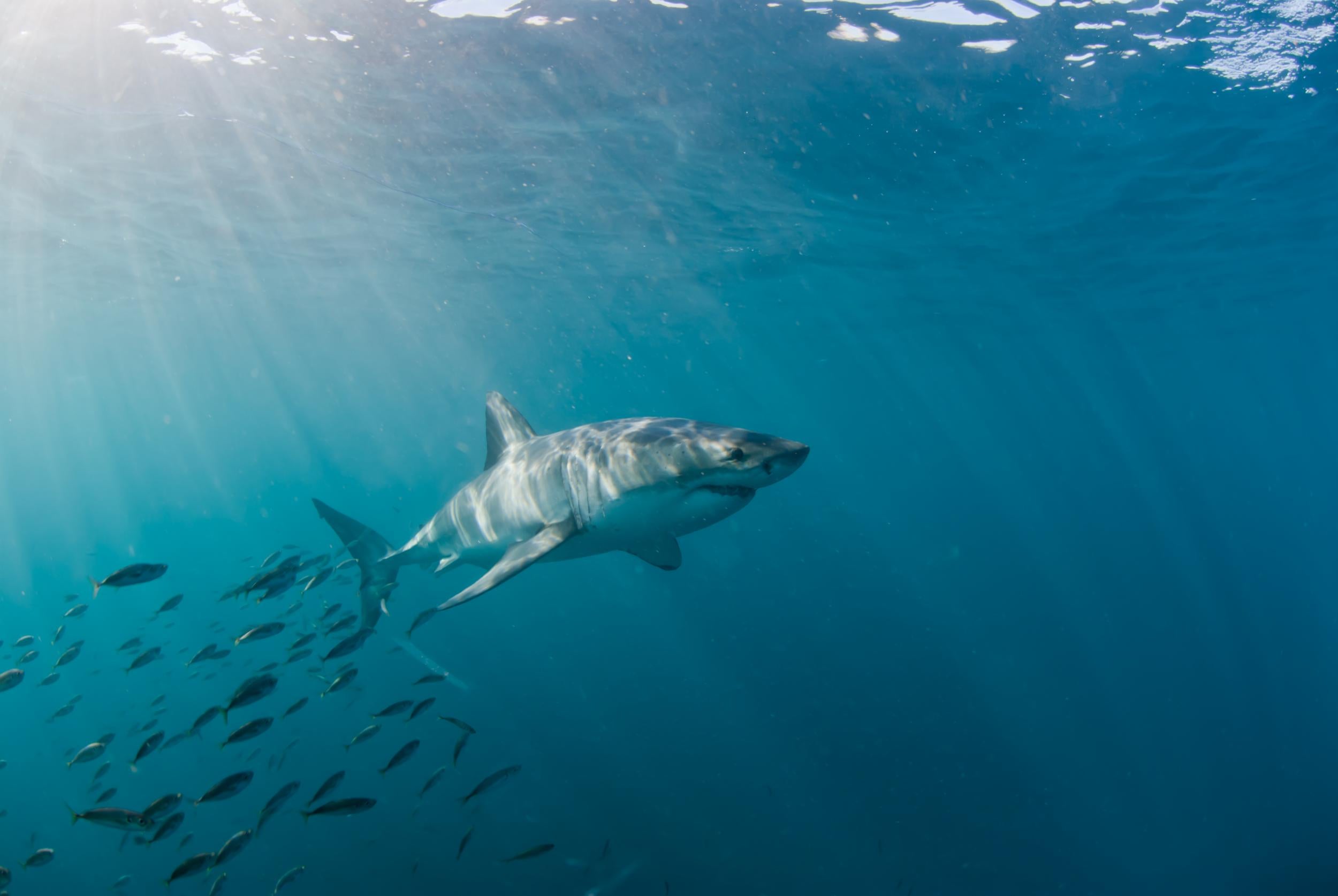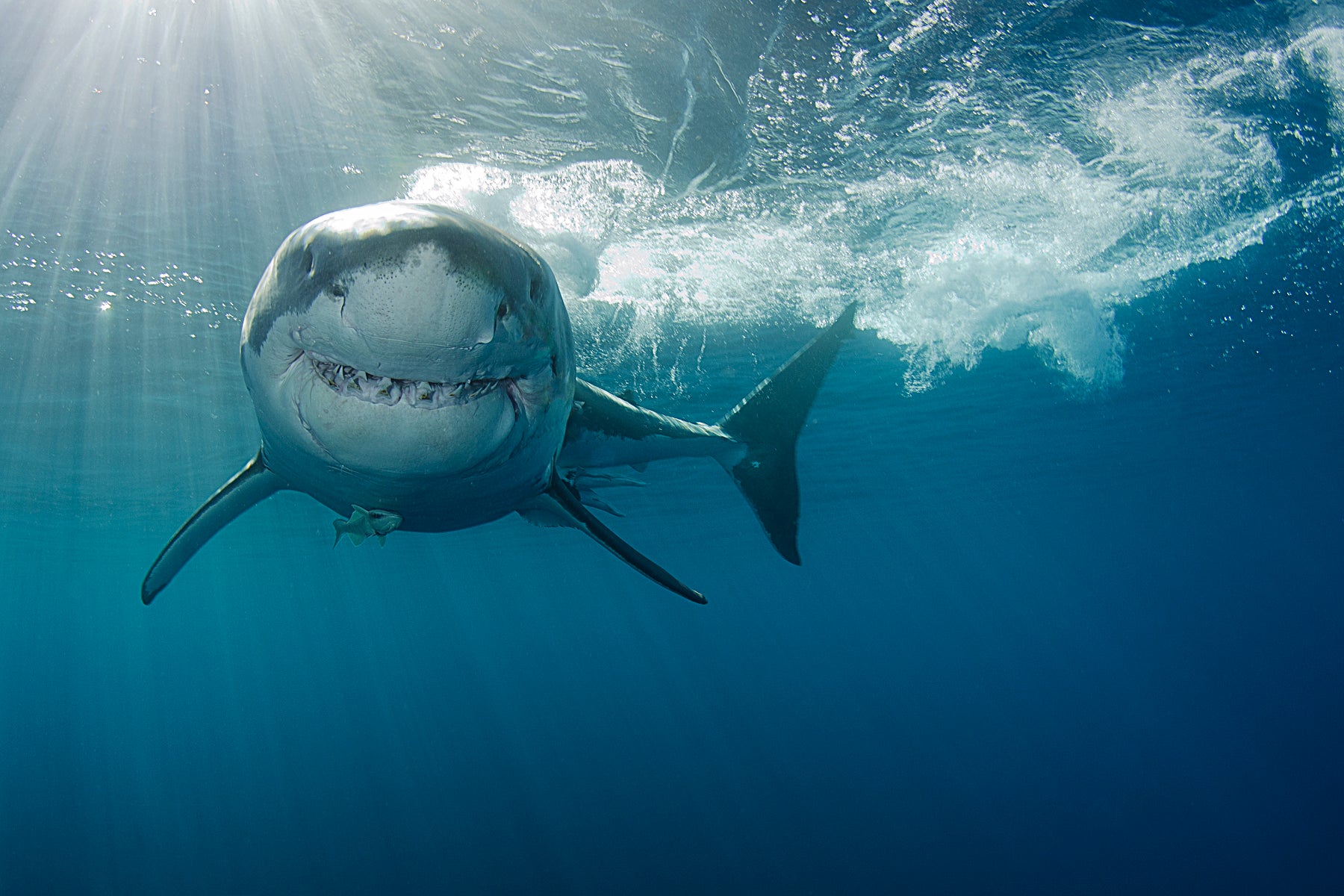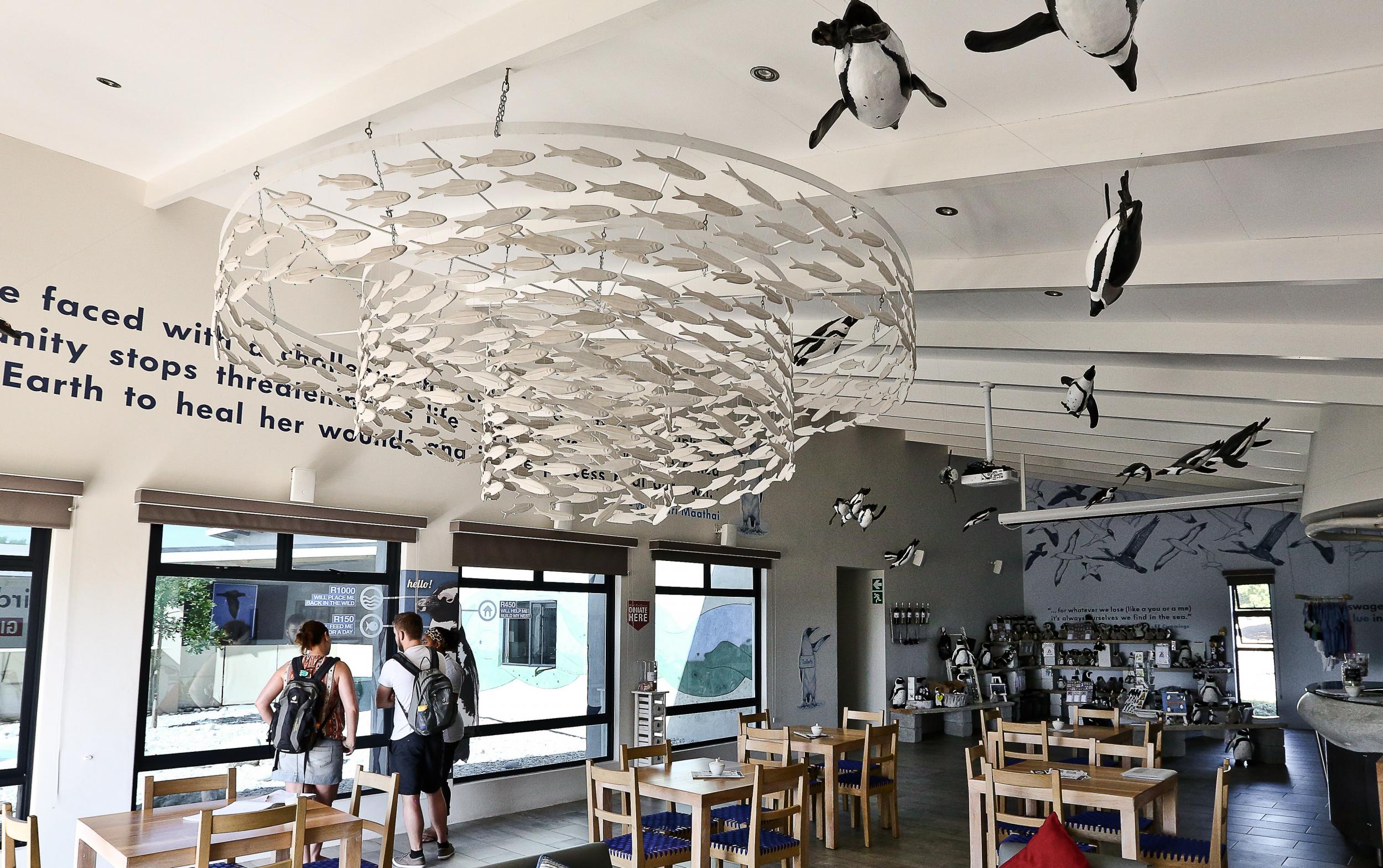Is shark diving irresponsible?
As questions continue to be raised about the animal welfare issues linked to popular wildlife tourism experiences, Sarah Reid suits up to find out what the future holds for shark cage diving

Your support helps us to tell the story
From reproductive rights to climate change to Big Tech, The Independent is on the ground when the story is developing. Whether it's investigating the financials of Elon Musk's pro-Trump PAC or producing our latest documentary, 'The A Word', which shines a light on the American women fighting for reproductive rights, we know how important it is to parse out the facts from the messaging.
At such a critical moment in US history, we need reporters on the ground. Your donation allows us to keep sending journalists to speak to both sides of the story.
The Independent is trusted by Americans across the entire political spectrum. And unlike many other quality news outlets, we choose not to lock Americans out of our reporting and analysis with paywalls. We believe quality journalism should be available to everyone, paid for by those who can afford it.
Your support makes all the difference.“Look right!” On the skipper’s signal, my shark cage diving buddies and I duck under the surface to watch a three-and-a-half-metre great white shark casually glide past the metal bars. It’s a surreal experience to eyeball the ocean’s most feared apex predator in one of its most famous natural habitats – South Africa’s “Shark Alley” – but as chunks of a fishy mixture known as chum bob past my snorkel mask, I can’t help but feel a bit uncomfortable about the toothy beast being baited for my entertainment.
During the past 15 years, shark cage diving has grown into one of South Africa’s top wildlife tourism draws, with eight operators in Gansbaai, the nation’s self-styled shark diving capital, alone. All operators here – and indeed most others in Australia, New Zealand, Mexico and the US – use chum, baited hooks and seal decoys to attract the elusive sharks to tourist boats.
Shark diving has been widely criticised by surfers, fishermen and divers over the years, primarily due to concerns that it was linked to attacks on humans, but a lack of evidence has changed perceptions about the industry. In fact, with an estimated 100 million sharks killed every year – 73 million of them used for their fins – the shark diving industry is now more commonly considered to be a key driver for conservation.
“There are three key ways to motivate for improved conservation and management of a species: economic value, scientific evidence and public pressure,” explains Grant Smith, managing director of South Africa’s Sharklife Conservation Group. “With lack of sufficient scientific evidence or any meaningful public pressure, the only leverage left to conserve sharks is ecotourism.”
Justin Francis, CEO of Responsible Travel in the UK, agrees. “Shark cage diving is far from perfect, but unless we can reduce shark finning through legislation and changing consumer attitudes, then the future of sharks is at risk. Tourists and tourism can play a role in this.”
To investigate further, I signed up for a shark dive with Marine Dynamics in Gansbaai, about two hours’ drive from Cape Town. Kicking off with an educational video and a comprehensive safety talk, all of its shark tours are led by a marine biologist. Shark tours also support the Dyer Island Conservation Trust, a not-for-profit founded by Marine Dynamics’ owner, Wilfred Chivell, which is well-known for its conservation and research programmes. It’s clear to me that Marine Dynamics is among South Africa’s most professional shark cage diving operators, but can any operator that baits a wild animal for human entertainment – a practice now broadly condemned by animal welfare experts – be considered responsible?

“Without a chumslick and a bait or decoy in the water you simply will not get a white shark to interact or stay at the vessel for guests to see,” says Alison Towner, senior marine biologist at the Dyer Island Conservation Trust. “That’s why chumming is also a standard procedure for shark research.”
But while there is no conclusive evidence that chumming is harmful to sharks, the long-term effects of the practice are still unknown. A study published in the journal Conservation Physiology in June 2018 found that great white shark activity increases dramatically during cage diving sessions, raising questions about the behavioural changes this form of tourism may be causing.
For me, cage diving didn’t come close to the thrill of spotting a shark (albeit a less bitey species) during a scuba dive or snorkelling session with no human interference other than my body in the water. With five other shark diving boats packed with tourists – each paying more than £100 for their moment with a shark – operating within a few hundred metres of our vessel at one point, it was difficult to believe that the sharks were the real winners.

On my way back to Cape Town, I popped into the African Seabird and Penguin Centre in Gansbaai. Opened in 2015 by the Dyer Island Conservation Trust, the state-of-the-art facility houses injured and distressed seabirds and penguins from all over South Africa, particularly endangered African penguins. Without the funding from shark tours, this brilliant centre – which is free to visit – probably wouldn’t exist, and at the end of the day, teasing a shark with a tuna head seems like a small price to pay for stimulating marine conservation, not to mention South Africa’s economy. Even if, to me at least, the method seems a bit irresponsible.
Travel essentials
Getting there
British Airways flies to Cape Town from the UK from £513 return.
A shark diving tour with Marine Dynamics in Gansbaai costs around £120pp.
Join our commenting forum
Join thought-provoking conversations, follow other Independent readers and see their replies
0Comments